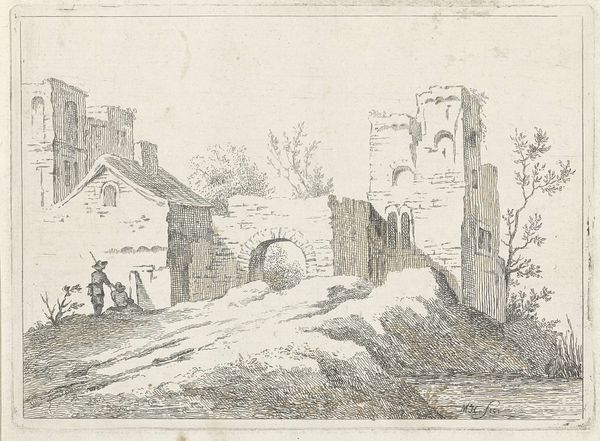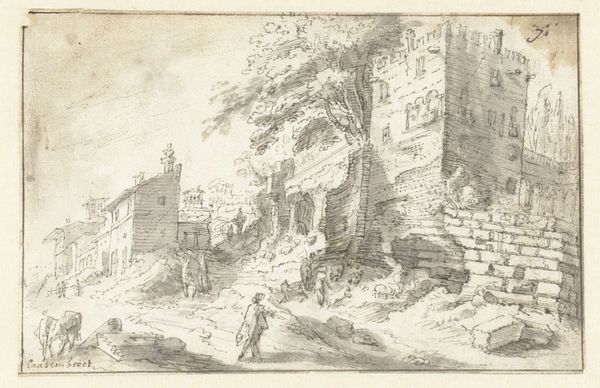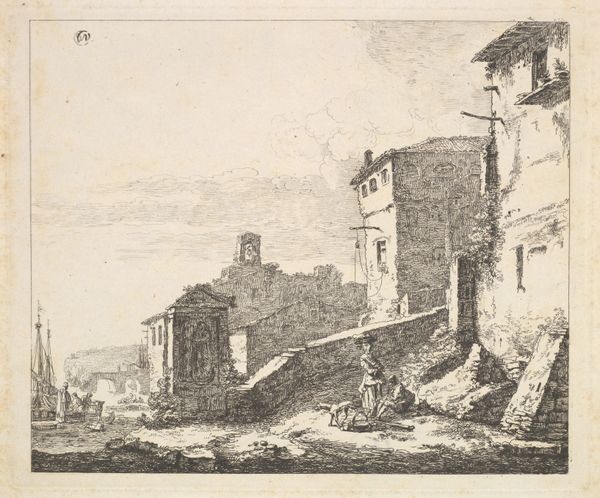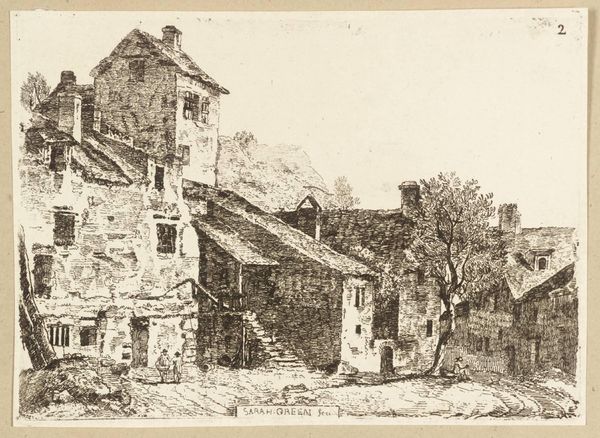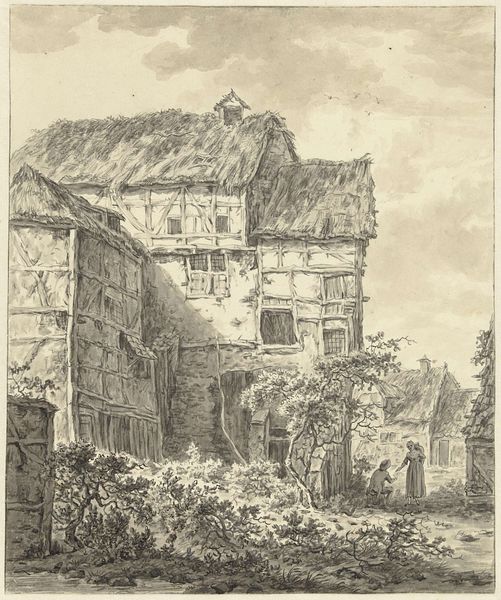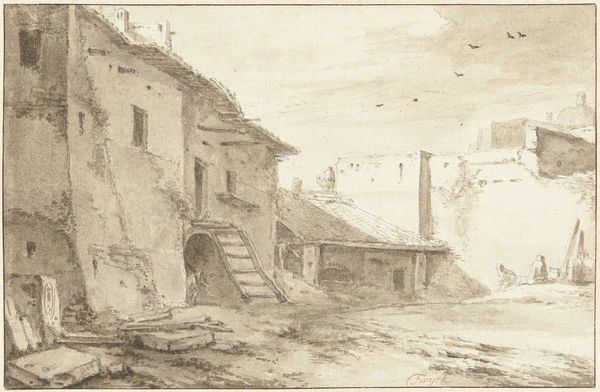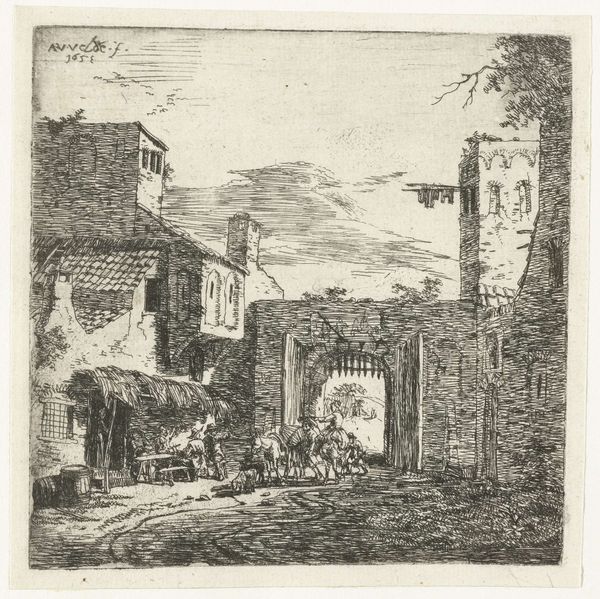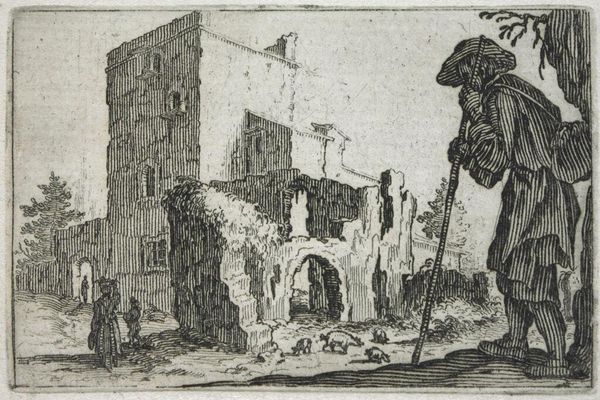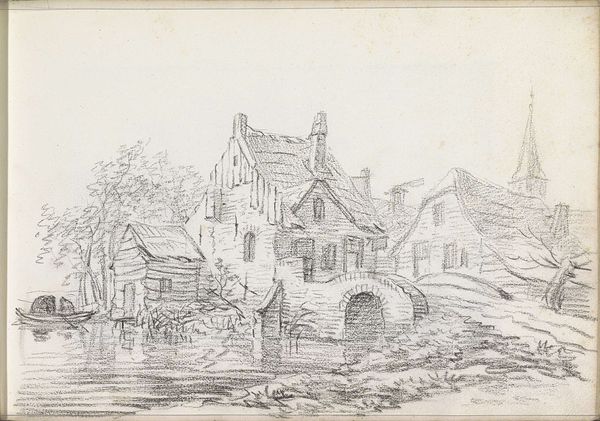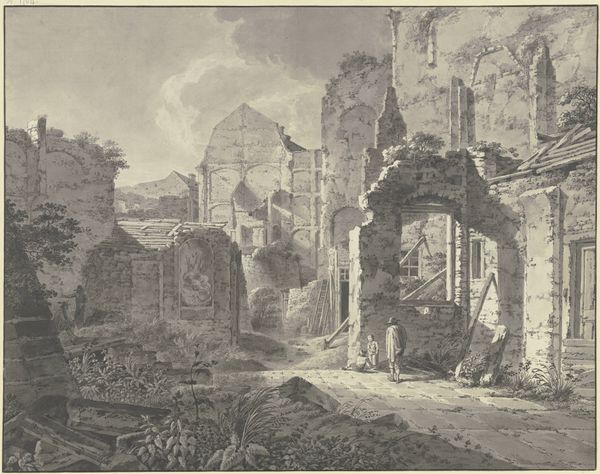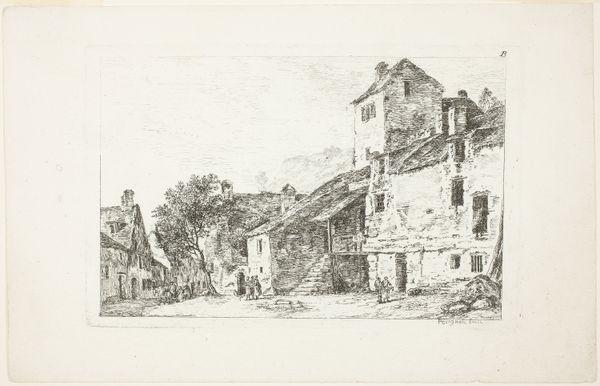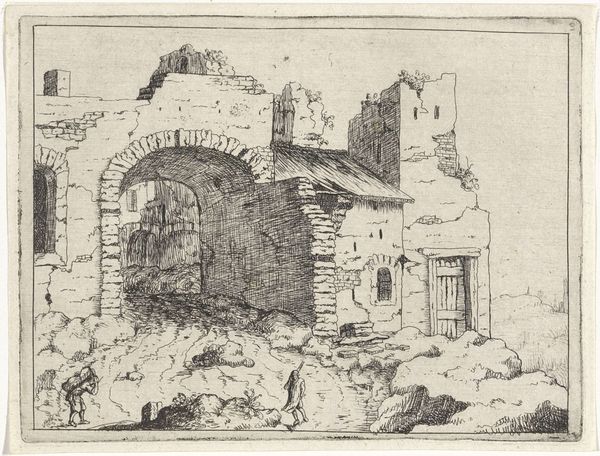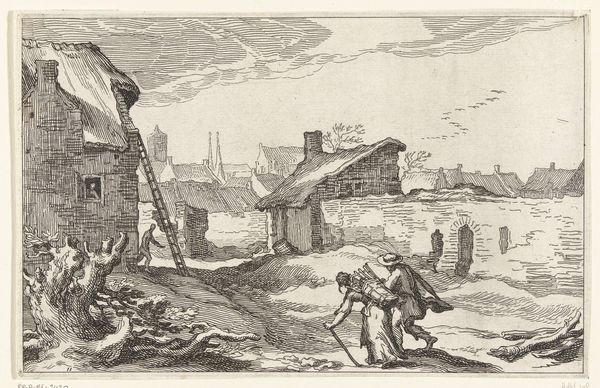
drawing, pencil
#
drawing
#
baroque
#
pencil sketch
#
landscape
#
pencil
#
cityscape
#
pencil art
Dimensions: height 91 mm, width 140 mm
Copyright: Rijks Museum: Open Domain
Curator: Here we have a pencil drawing by Anthonie Waterloo, created sometime between 1619 and 1690, titled "Stadsmuur van Hamburg van de buitenzijde gezien," or "City Wall of Hamburg Seen from the Outside." It's currently held in the collection of the Rijksmuseum. Editor: It's somber, isn’t it? The muted grays create a melancholy atmosphere. I immediately notice the towering structures softened by the encroaching vegetation, blurring the lines between the urban and the natural. Curator: I think Waterloo is highlighting that very tension. These city walls were erected for protection, representing power and control, yet they are slowly being reclaimed by nature. Consider the social implications of borders—how they both safeguard and isolate. Editor: The archway definitely speaks to transitions, a liminal space. It almost has an underworld feeling to it, especially with the dark, watery tones around the tunnel. Water is such a potent symbol of purification and the subconscious in art and culture. Curator: It certainly provides an opportunity to ponder the function and perception of city walls in that period. Who was allowed within and who was kept out? How did this affect social cohesion? Waterloo's choice of the outer view gives a strong impression about how exclusion feels to communities on the margins. Editor: And it's not just about exclusion, is it? Think of what these walls *symbolized* for those inside. They were more than defense—they represented safety, order, the known world versus the chaos outside. The very idea of "city" versus "wilderness" and the values tied to them! Even the pencil sketch suggests the impermanence of these walls. Curator: Indeed, seeing those values through Waterloo’s landscape highlights the ever-changing nature of social structures and the constant dialogue between the built environment and the organic world. The artwork presents more questions than answers, inviting us to reconsider fixed notions of history. Editor: Absolutely. It encourages us to confront how symbols can evolve. I find I look at city walls in a new light after seeing this drawing, thinking not just of division, but of collective identity and how it forms and reforms over time.
Comments
No comments
Be the first to comment and join the conversation on the ultimate creative platform.
